How to Choose the Perfect Coffee Table for Your Small Living Room
When you’re decorating a small living area, every bit of space counts. That’s why choosing the right coffee table is so important.
A large coffee table can help to define your room as well as provide much-needed storage – but it can also take up a lot of valuable floor space.
Not all coffee tables are created equal, and there are a few things you will want to keep in mind before making your final decision. This does not mean that choosing a coffee table has to be a difficult task, though.
In this blog post, we discuss some of the best coffee tables for tight spaces and offer tips on how to choose the perfect coffee table for small living room!
Please note: This article may contain affiliate links. If you click on an affiliate link, we may make a small commission to help keep this site running at no extra cost to you. Thank you!
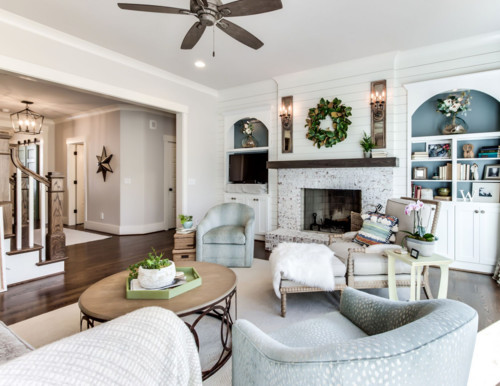
Obviously, Size Matters
Coffee tables come in all shapes and sizes, and when you’re furnishing a small family or living room, coffee table size definitely matters.
Consider the size of the table in relation to the size of the room
Traditional coffee tables can range in width from 24 inches to 48 inches or more. While this may be the perfect size in a larger living room, it can make smaller rooms feel even more cramped. The general rule stating that coffee table size should be two thirds the width of your sofa simply may not apply in a small room.
Instead, you want to choose a coffee table that is more balanced with the size of your entire room as opposed to only considering the sofa portion.
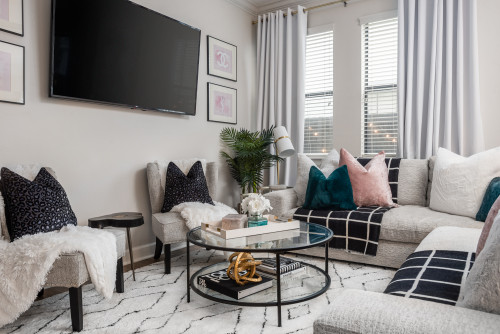
If you have a smaller living room, it is important not to choose a coffee table that is too bulky. A large table will take up valuable floor area, make your room feel smaller, and won’t allow for comfortable foot traffic.
Conversely, you don’t want to choose something too small or delicate. Not only will it look out of proportion, but it also may not be very functional.
Consider the height of the table
Height is also important when choosing a coffee table for small spaces. You don’t want a coffee table that’s too tall or too short, as this can make your space feel unbalanced.
Coffee tables typically range in height from fifteen inches to twenty inches, but the perfect size coffee table will fit in seamlessly with your other furniture. It should also be the correct height for people to comfortably rest their feet when seated.
Choosing a coffee table with adjustable height can help you to get the perfect fit for your smaller living room!

Shape Matters Too
The shape of your coffee table can also have an impact on how much space it takes up in your room. A quadrangular coffee table with its sharp corners may not be the best choice as it can take up more space than you want to give.
Round Coffee Table
A round coffee table is a great option for small spaces because it won’t take up as much area on your floor. A circular table can also help to create a more intimate feel in your living room by softening the angles of the room.
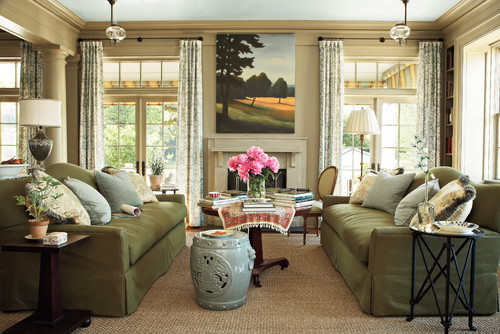
Square Coffee Table/Rectangular Coffee Table
If you entertain often, a square or rectangular coffee table might be worth considering because they can provide a larger surface for food and drinks.
Square coffee tables are probably the most versatile shape and can work well in smaller, well-proportioned rooms, especially if you choose a square table with a lower profile.
A rectangular coffee table can work well in a narrow room. Just be sure to choose a table that is not too long or you may end up with a coffee table that feels like it’s taking over your living room!

Abstract Shape Coffee Table
An abstract, oblong coffee table shape, like an oval, kidney, or hourglass, can also help to save space. These tables often have a smaller footprint but still offer plenty of surface area.
The perfect coffee table will add interest to your home décor without being too cumbersome.
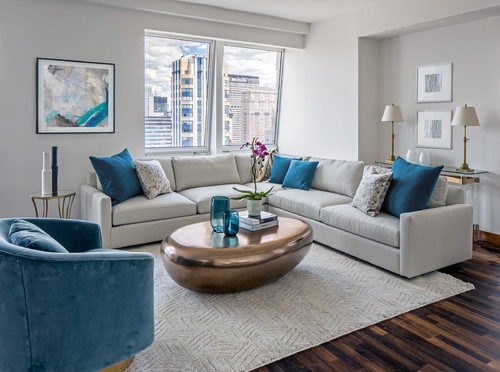
Consider the Purpose of Your Coffee Table
When you’re choosing a coffee table, it’s important to think about its primary purpose.
Do you want your coffee table to be a place to put your feet up and watch TV? Need storage space for books or blankets? Do you want it to double as a dining table?
Knowing how you plan to use your coffee table will help you choose the right one.
Relaxing
For example, if you’re looking for a place where you can relax and rest your feet, the coffee table height should be lower than the sofa’s seat cushions. An upholstered coffee table or storage ottoman is a great option because each of these typically has a padded top that is perfect for propping your feet up.
Storage
If you’re using your coffee table as a place to store books or blankets, look for coffee tables with drawers. You also might want to consider an ottoman coffee table. Storage ottomans have padded tops and they can be used as a seat or for storage – or both.

Dining
Or, if you want to use your coffee table as a dining table (either because you have no dining room or because you want to eat your dinner while watching tv), you may want to choose a coffee table that is convertible.
Family Friendly
Coffee table height is also something to keep in mind. If you have small children, you might want to choose a coffee table that is lower to the ground so it’s easier for them to reach.
Or go with a convertible table and raise or lower it to suit your needs.
Function Over Form
In small spaces, the ideal coffee table will be both functional and stylish, and it will work with your furniture. Modern coffee tables offer a variety of features that will help you make the most of your small space.
Built-in storage
Many coffee tables come with built-in storage, which can be perfect for hiding away extra throw blankets or pillows. Storage ottomans with removable tops can also double as coffee tables and offer extra seating when guests come over.
Nesting tables
If you entertain often, nesting coffee tables can be a great option. Nesting coffee tables are tables that come in sets of two or more. The table heights are designed so that they can stack on top of each other.
Nesting tables allow you to have multiple coffee tables in one small space. When you’re not entertaining, the coffee tables can be nested together to save space.
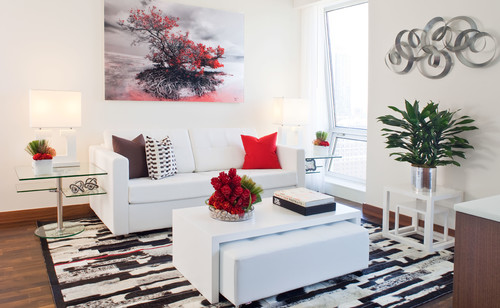
Convertible coffee tables
Another great option for small spaces is a convertible coffee table. This type of coffee table has a top that can be lifted up to reveal a hidden tabletop underneath.
Convertible coffee tables can transform into dining tables, ottomans, or even end tables.
They also have additional storage space, perfect for keeping your clutter out of sight.
A convertible coffee table is perfect for small spaces because it’s so versatile.

Casters
Casters are another great feature to look for in a coffee table, especially if you have hardwood floors.

An industrial coffee table may be the most likely to have casters, but any coffee table with a more modern design can also feature these handy little wheels. Casters make it easy to move your coffee table around, so you can rearrange your furniture as often as you like.
Removable trays
Some coffee tables come with detachable trays, which can be used as serving trays or as a place to set down your coffee cup or wine glass. Or, you can add a tray to your table to increase its function.
If you have no dining room or regularly plan to dine from your coffee table, having a tray that lifts off is a really great convenience.
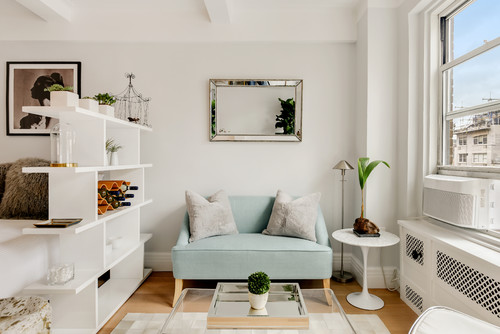
Hairpin legs
Hairpin legs are a popular coffee table leg style right now, and for good reason. These metal legs have a mid century design that makes any coffee table look more stylish.
Hairpin legs are also great for small spaces because they don’t take up a lot of room.
Also, the design of the leg itself feels airy and open, making hairpin leg styles perfect for a small living space.
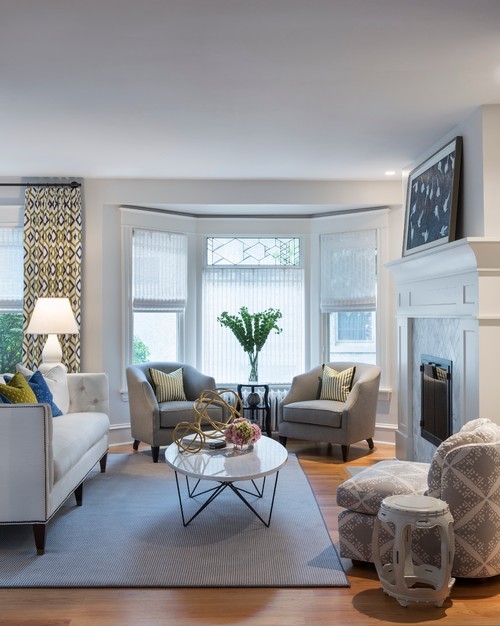
Accent Tables Can Work Too
If you’re really struggling to find a coffee table that works in your living space, you might want to consider using an accent table (or two) instead.
An accent table is a small table that can be used for any of several purposes, including as a coffee table, end table, or side table.
An accent table may be shorter or taller than a classic rectangular coffee table and can come in a variety of different shapes. This means that you will need to keep an eye on the size and scale of the table in relation to your other furniture.

When choosing an accent table, make sure to pick one that complements the style of your current furniture. You may want to take a tape measure along with you when shopping to ensure that the table will fit in the space you have available.
Accent tables can be fun and quirky and they are a terrific option if you want a table that can serve multiple purposes.
Think About Materials
When you’re choosing the best coffee table for your living room, it’s also important to think about the material.
Acrylic coffee tables are a popular choice because they offer a clean, modern look which can help give your living room an airy and open feeling.
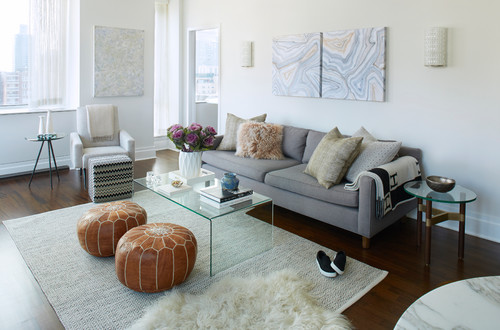
Wood coffee tables can create warm, cozy vibes.

Materials like bamboo, rattan, and wicker can add texture and visual interest without taking up a lot of space.
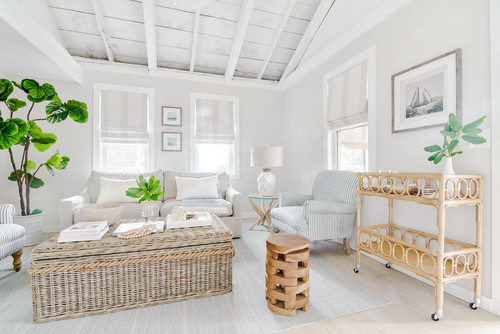
Upholstered coffee tables are another option, and these can add a touch of luxury to your living space.
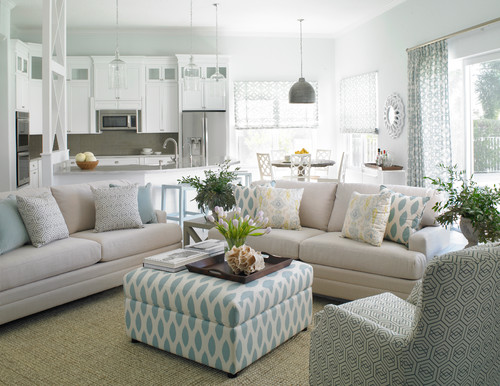
Consider the style of your living area when you’re choosing a coffee table. If you have a more modern living room, a coffee table with a glass top and metal frame might be the perfect choice.
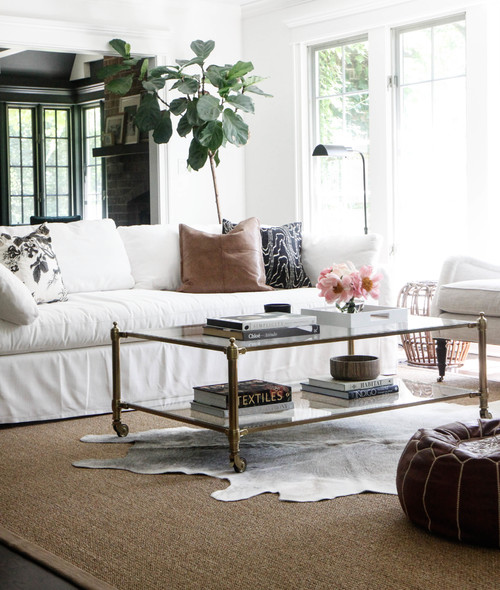
If you want to create a more traditional feel, a coffee table made of leather might be the right option for you.
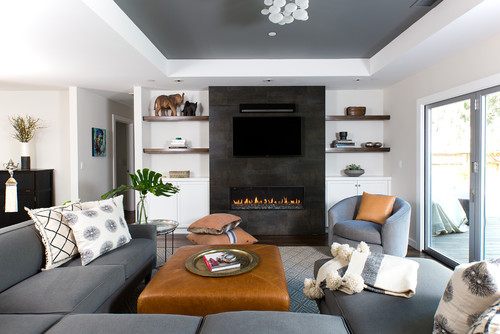
Ultimately, your room determines which coffee table is the best fit. So, when you’re considering materials, think about what will work best with your current furniture and decor.
You may also want to think about how easy the coffee table is to clean and how durable it will be.
No coffee table? No problem.
Small living rooms can still be flexible and adaptable.
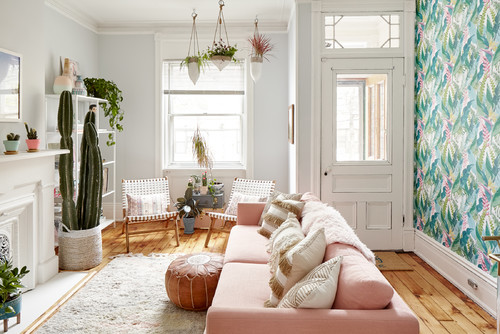
Use what you have
If you don’t have the space (or budget) for a new coffee table, you can use a small stool or ottoman – or even a stack of books with a tray on top to create a makeshift coffee table. Just make sure you can comfortably reach everything.
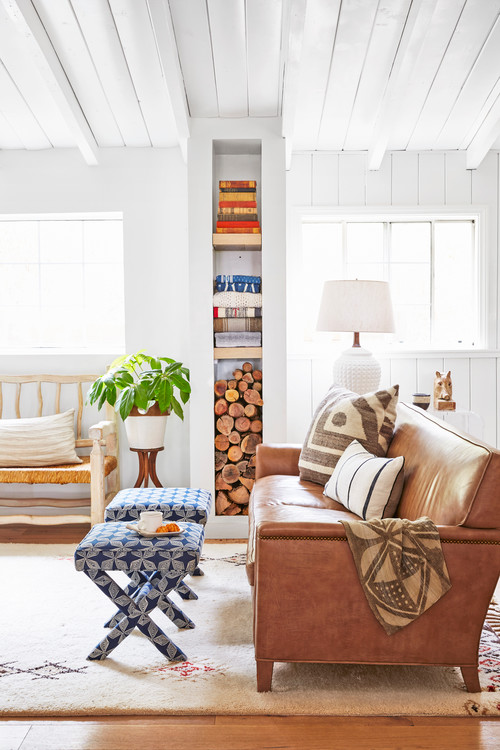
A single table can do double-duty as a side table and coffee table as long as you are willing to move it.
If you want to get really creative, you could even use something like a ladder as a coffee table. Just make sure it’s stable and large enough to hold everything you want to put on it.

DIY it
Handmade pieces are always a great option, too. One way to create a coffee table is by using crates or boxes. You can find these at most home improvement stores, and they’re usually very affordable.
To create a coffee table using crates, simply stack the crates together and then add a board or piece of plywood on top (or not). You could also paint or stain the wood to match your furniture.

Think creatively
Don’t forget about unique furniture pieces like chests, trunks, and benches that can double as coffee tables.
In small spaces, it’s important to be creative and resourceful.
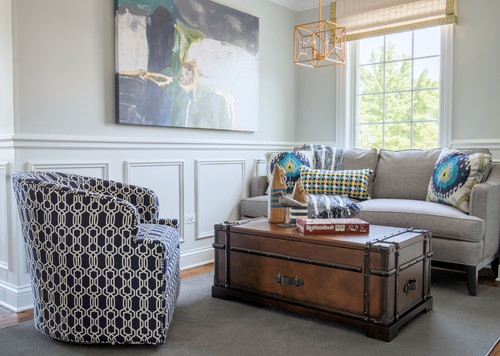
Just make sure that whatever you choose to use is the right height for your sofa or sectional and chairs and that you have enough room to walk around it.
Any interior designer will tell you that having an unobstructed eye line and choosing the correct coffee table size is essential to making a small room seem larger.
So, if you can’t see over your coffee table, it’s probably too big!
How to arrange the room
If you are working with a small living or family room, your new coffee table and your existing furniture will need to work together when you decide how you arrange the room.
Round
If your coffee table is round, you may want to consider a circular arrangement with your sofa and accent chairs facing each other. Equal space between each piece of furniture will make the room feel more open. Place the tv stand or entertainment center in line with the coffee table to help create balance in the room.

Rectangular
If your coffee table is rectangular, you might want to try a floating arrangement. Place your coffee table as the center of attention and arrange your other pieces of furniture around it. Just be sure there is a comfortable distance between each piece of furniture so that people can move around easily. A media stand can be placed parallel to the coffee table to help fill any dead zone that might exist.

Square
If you have decided on a square table, you might want to consider a symmetrical arrangement with your sofa in the center and your chairs arranged around it. The coffee table size will dictate how much room you have for this arrangement. A tv stand could be placed in the room farther away from the furniture to help create a sense of depth.
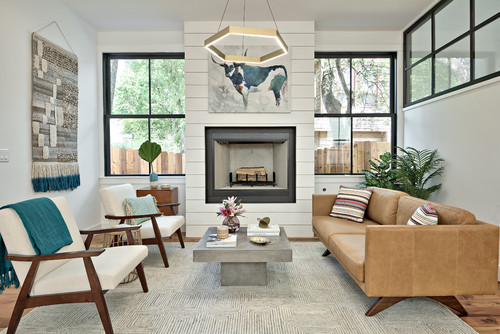
Larger sized
If you are trying to work with a larger size coffee table, you might want to consider a somewhat asymmetrical arrangement where the table is centered with the sofa but the other furniture is not equally balanced. You will still want to be able to comfortably grab snacks and drinks from the coffee table though, so make sure it is placed close enough to all of your furniture for people to be able to do so.
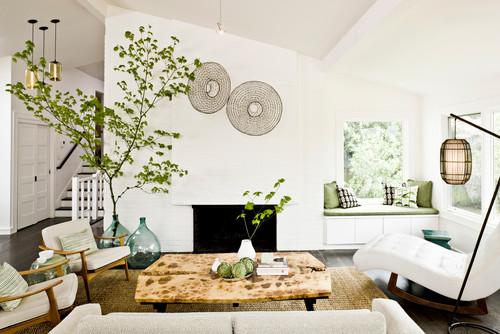
You have options
It is also possible to create a sense of balance by using two or more smaller coffee tables instead of one large size table. This can be a great way to add visual interest to the room and make it feel more spacious.
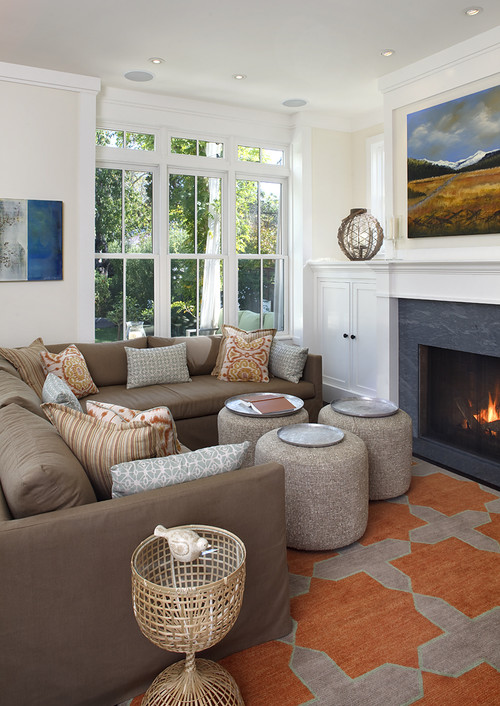
Conclusion
A coffee table is an important part of your living room, but it doesn’t have to be a big, bulky piece of furniture.
There are plenty of smaller coffee table options that can help you save room and create a more open feel. Just keep in mind the size, shape, and purpose, as well as your entertaining needs, and the overall design style you want to create.
Consider features like nesting capabilities, storage, and materials when making your final decision. With an open mind, a dollop of dedication, and a little creativity, you can definitely find the perfect coffee table size for your small space – without being an interior designer!